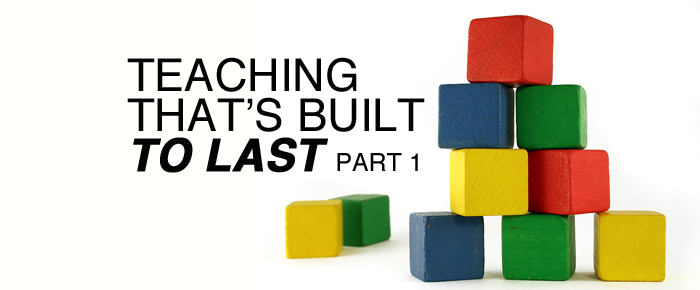We all want the things we are teaching to last longer than the back door of our youth room. We teach lessons that need to last and become foundations for life.
In order for us to do that, we must create youth ministry environments and lessons that give students the building blocks to construct for themselves the truth that will last for a lifetime.
I am not talking about a “pick and choose what I like and don’t like” model of teaching truth. I am rather talking about an intentional approach that is less “preacher” and more “teacher.” It is an educational model and approach that allows us to come beside, lead, and teach while handing off the unchanging truths.
THIS IS AN IDEA CALLED “CONSTRUCTIVISM.”
Allow me to bore you for a moment with a brief explanation.
“Constructivism” is a philosophy of education that tries to define how knowledge is constructed in the mind of a learner when new information comes into contact with existing knowledge that had been developed by previous experiences. At the core of constructivism is the idea that a teacher must understand the way knowledge is created in order to adapt it to the world of the student. It’s based on the idea that a teacher uses “constructs” (or building blocks) of discovery, hands-on, experiential, collaborative, project-based, and task-based learning to engage knowledge.
It is not that we do not do this already, but we need to fully name and claim this in our Middle School and Jr. High ministries. After recently finishing a master’s in middle school education, I more completely understand and embrace this in my approach in my teaching and lesson preparation.
CREATING A TEACHING MODEL THAT’S BUILT TO LAST
Here’s how to do it. Begin to ask simple questions of what you are about to teach, like:
- What do I want my students to discover on their own, and what do I want to teach from the front?
- What are the ways I could teach the contents of this lesson kinesthetically, through a physical activity or game that would further solidify this information in my student’s minds?
- How would I like my students to experience this truth both during the lesson and teaching time and later on in the ministry year? (Like with retreats, events, trips…)
- When would be a good time for me to stop or pause in teaching, to allow students to collaborate in “teaching each other” this truth?
- How am I taking what I am teaching and allowing students an opportunity for “high end” thinking through direct application in projects, tasks, or other ways of practicing this idea?
There’s much more to talk about here. But we’ll save that for Part 2. In Part 2, we will explore 5 pieces that play into a youth ministry-based model of teaching that is “B-U-I-L-T” to last.


